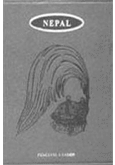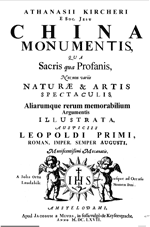Vol 08, No 14, January. 16- 2015 (Magh 2, 2071)

Charles A. Sherring & M.A. F.R.G.S, Western Tibet and the British Borderland: The Sacred Country of Hindu and Bouddhists (London: Edward Arnold, 1906)
The book Western Tibet and the British Borderland: The Sacred Country of Hindu and Bouddhists (London: Edward Arnold, 1906)is an interesting work that deals with religions being practiced in a high mountainous as well as picturesque part of the Central Asia. It includes Mount Kailas, the Holy Lakes of Mansarowar, Kangra, Garhwal, Almora, the Kedarnath, Badrinath and adjoining territories, many of which Nepal ruled when they formed part of Khasan, and of the unified Nepal, for a brief period, until before the Anglo Nepal War (1814-16).
In this work, Charles A. Sherring, a 19th century British anthropologist and surveyor, describes this land as shared land of Hindus and Buddhists, full of holy lore,legends and myths, and quaint customs and manners, that one cannot find elsewhere. Unhindered by outsiders, both the people and their land prospered with their own peculiarities, their proud religions, evolving a distinct characteristic to their civilization.While the author describes the Tibetan part of this beautiful landscape as Western Tibet, the part on this side is describes as the British borderland.
The author starts his work with the talks about Askot, which once fell under Doti kingdom, and the aboriginal Raji people living in this hinterland. He describes Bhotia people and their extremely attractive manners and customs. The religions of the Tibetans, who live further inside in Tibet, Hindus and Bhotias have also been compared. There is analysis of their customs and superstitions. Bhotia marriage customs have been discussed with Tibetan and Bhotia death ceremonies. The Tibetan trade route that passes from this territory has been also described. The details about the Tibetan administration in Western Tibet, or Nari province comes next in the book. Taklakot, or Purang find their mentions along with their officials and priests.
These are the places which come in on for discussion in the history of Khas kings of Nepal who ruled some of these territories once. Further, Sherring, ecstatically describes Mansarowar and Kailas as the Abode of the Gods. He also talks about the market of Gyanema, the Sutlej Valley, and what he describes as Kingdom of the Amazons in subsequent chapters. The author concludes his book dealing with the passes to Western Tibet and Customs of the Western Bhotias. Any piece of information given by him is indeed invaluable.
Nepal finds its place in this book mostly in the context of a borderland which is connected with the British territory socially, religiously and topographically. The Mahakali river comes into the picture many times as the frontier against Nepal. On the Nepalese side of Dharchula, the author mentions of a court house, a gaol and the residence of the Nepalese Lieutenant, who is in civil and criminal charge of this part of the country. There is an impressive list of illustrations that includes photos of Rajis and Rawats, the foaming Mahakali river, the rope bridge at Dharchula, the natives of the upper hills, and a rugged landscape near the Lipu Lekh Pass, Nampa (in Nepal) and Taklakot, to mention just a few.
Further, Sherring, highlights at some length the spread of Buddhism from India to Tibet. Subsequent to the acceptance of Buddhism in Tibet, traditionally holy places, under Hinduism, such as Kailas and Mansarowar were regarded as the “paradise of their gods” by the Tibetians. In addition, there is mention of the growing influence of Hinduism and Buddhism on the Bhotias, who were the Mongolian tribes living on the border areas. As such, Kailas and Mansarowar, till this date, is widely acknowledged as their heaven where their lord creater, Brahma the omnipotent, resides.
The author talks about the regions of Almora and Garhwal and assesses the inhabitants of the regions. According to him, the main inhabitants of the region were the Khasia race and they spoke what he thinks is a dialect of Hindi closely related to the Rajputana. Sherring, then, goes on to elaborate on the origins of the Khas people. From Khopene in the rivers of Kabul Valley, Kissia metioned by Herodotus to the Caucasus of Pliny, the origins of the Khas roots can be traced. In his opinion, the original Khasiyas were principal inhabitants of the Western Kashmir regions, who, over the course of time, migrated east into Kumaun, India, Nepal and upto Teesta by Darjeeling.
Quoting Atkinson, the author claims that the Khas race has been identified as the great Aryan race that migrated to India in the vedic times. Gradually, the race has spread itself over the “Gangetic valley and elsewhere.” In due course, as the author points out, the members of the Khas race took different religious routes depending upon their area of residence. Some of the them took up Buddhism, while others took up Hinduism and some even took up the holy faith of Islam. In terms of their tarnished reputation in the Hindu religious books, the author mentions that due to their non-confomity with the “Brahmanical rituals”, as prescribed by the religion, they were spoken of with contempt. However, this, according to the author, did not detract from their faith. Albeit, with time, the Khas have started to acknowledge some of the prevalent practices and incorporated them in their cultural undertakings.
Sherring describes the Indian demographic as consisting of Bhotias on the north side of the Himalayas and the Khasia on the hill regions. According to him, Bhotias had an important role to play in connecting Tibet to India through the medium of trade. Sherring then goes on to highlight the food taking norms prevalent in the northern regions of the border, especially between the Bhotias and Tibetians. The author highlights the norm that Bhotia Rajputs do not eat the Bhotia Dumras. However, to the surprise of the author, Bhotias do not mind sharing a meal with the ” cow killing ” Tibetians. Under the pretence that cow killing is one of the most heinous offences in Hinduism, the author reminds the readers of the bizarre practices, which at most times, seemed oddly hypocritical. However, the author is quick to point out the pursuit of well cooked meals from ” Bhotias, who are of much better social condition, and enjoy greater material prosperity” as opposed to their “abdominally filthy” Tibetian counterparts. Further, Sherring, in describing the domestic details of life prevalent in this part of the world assesses that, ” the eastern Bhotias invariably put women in a high place, in this way differing radically from Hindus, who regard her as a chattel, and Buddhists, who let her rank among dogs.”
The brave Gurkhas of Nepal also get mentioned in the book when the author describes about the political history of Kumoan borderland. According to the author, the Eumoan regions, currently under Bhotia regime, belonged origionally to Tibet. However, subsequent to the British expansions in 1670 A.D., a portion of the “mahals” was conquered. Later, the remaining tract was conquered by the Gurkhas, who happened to rule the Kumaon region a hundred years prior. The Gurkhas later lost the tract to the British Empire in the Gurkha War.
Thriving trade between India, Nepal and Tibet also gets a mention in Sherring’s book. The value of Nepalese coin in trade has been highlighted when the author states; ” Even the Nepalese coinage takes a prior rank to that of Lhasa in the popular estimation.” The author mentions Nepal as the “adjacent link” between the two giants, namely India and Tibet.
In conclusion, Charles A. Sherring’s book is a very important source of information on the people and Hinduism and Buddhists as practiced in the Western Tibet and adjoining areas.There does not seem to be any book of this magnitude written by anybody before with the rich analysis of the people and territory with their combined heritage.The most important aspect of it is,however, the aspects of harmony that the Hinduism and Buddhism has developed, giving not just a picture of religious tolerance, but also wealth of integrated culture.Researchers working on Nepal’s ethnicity might find many important linkages for them in this book.





